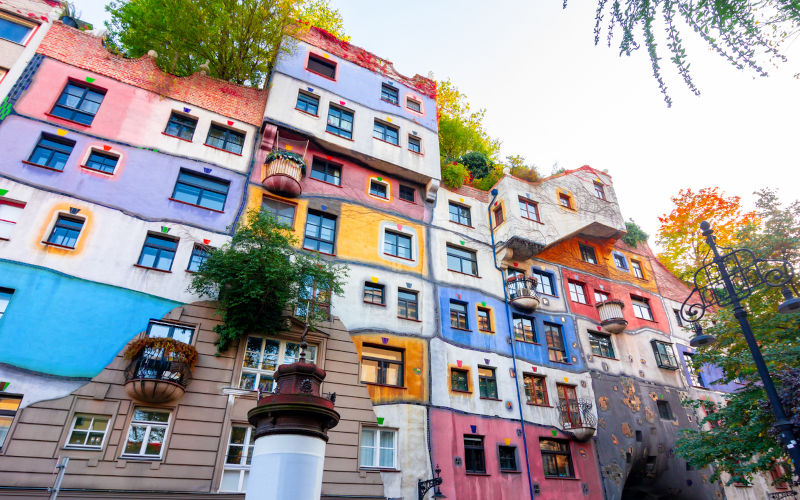Want to solve Australias housing crisis? Look to Vienna
September 23, 2023
What do you think of when you think of Vienna? Probably not a model for affordable housing in Australia.
More likely cafes, waltzes, music, art, the Ringstrasse, Lipizzaner stallions, spies and Harry Lime or the brilliance of post-war Austrian foreign policy in convincing the world that Hitler was a German and Beethoven an Austrian?
Yet, perhaps more significant than all of this is that in 2023, Vienna yet again topped the Global Liveability Index.
Much of how that was achieved started 100 years ago. The centenary has recently been marked by a long article in the Weekend Financial Times and an interview with the Deputy Head of Mission, Victoria Wagner, at the Austrian Embassy in Canberra published in LSJ, the Law Society of NSWs online journal.
Back in 1923 the Vienna City Council, run by the Social Democratic Party, began a program which should be an inspiration to everyone seeking to solve housing problems. Under the program the council built 25,000 units of subsidised public housing for the poor, financed by new taxes on land, rents and luxury goods. Historian Wolfgang Maderthaner told The Weekend FT that Vienna had been a dying city financially and literally from diseases such as TB. He said Vienna funded the program by new taxes on land, rents and luxury goods as well as champagne, brothels, fine dining, horseracing, cars.
One of the earliest of these new structures was Karl-Marx-Hof which is one of the longest residential buildings in the world. It is also one of many magnificent Viennese tourist attractions. Similarly, the Hundertwasserhaus social housing project is also a major Viennese tourist attraction with its multi-coloured complex covered in mosaic and plants.
A more contemporary building, which was one of the first commissions for the late Zaha Hadid, is also a tourist attraction. One of the most recent social housing developments, which even has a swimming pool on the roof for residents, is also a tourist attraction.
Unlike many Australian developments 50% of all new developments must also be green spaces.
Victoria Wagner told the LSJ: I belove that the Vienna model for affordable housing makes a major contribution to social peace and equality in the city, and also brings people from different social and economic backgrounds together.
There are various kinds of housing that are either fully owned by the City of Vienna (social housing estates Gemeindebau) or where the city government provides funding to not-for-profit developers to build rent-controlled flats, she said.
Refugees, after a qualifying period, are also eligible. Low impact urban renewal and infrastructure maintenance creates about 20,000 secure construction industry jobs and the social housing build helps cut around 371,000 tonnes of carbon emissions annually.
The Weekend FT compares Viennese rental prices to other cities saying the average monthly rental price in London is now 2,343 pounds (up 16% in a year) and in Manhattan is now more than $US5200 up 19% in a year. If you check Australian rents you would find that in Sydney it is $2400 and around $2000 in Melbourne.
In Vienna the average monthly price for a 60 sq m flat in the city is Euro767 with social rents significantly lower.
And, of course, Vienna is still a city of culture which offers a wide variety of choices. Culture is in the DNA of Vienna, but we invest a lot of money trying to make it accessible. Nobody is excluded on the grounds of wealth, Veronica Kaup-Hasler, Viennas Minister for culture and science told the Weekend FT.
Welfare recipients are entitled to apply for opera tickets; during the summer there is a free outdoors music festival that takes place for six weeks in city squares, council estates and old peoples homes. Independent cinemas are also subsidised, although how frequently The Third Man is screened is uncertain.
Not everything is going swimmingly in Austria though. The opposition Freedom Party is growing in strength as it imports identitarian ideas from the US Right wing and the Hitlers first victim narrative is still alive in some elements in society.
Moreover, like most other cities various architectural monstrosities are also being planned. For instance, just outside the Ringstrasse a massive temple to luxury consumerism, according to the FT, is being constructed by a friend of former Chancellor Kurz currently accused of government corruption.
It is to be called the Lamarr. And that evokes a wonderful tale. Back in 1933 Hedwig Kiesler, the 18-year-old daughter of a banker and aristocratic pianist starred in a film, Ecstasy and shot to Central European infamy as the first woman to (feign) orgasm on screen.
Her Nazi supporting weapons manufacturing husband was not impressed so she drugged her maid and scarpered out of the window of his castle. Aboard a mid-Atlantic Ocean liner, Keisler was reborn as Hedy Lamarr, the FT reports.
Lamarr, of course, was not only a film star but was also the inventor of a cutting-edge guidance for torpedoes system which the US passed on because of her Austrian background (probably because she was a woman too) although the technology later became the basis for Bluetooth.

